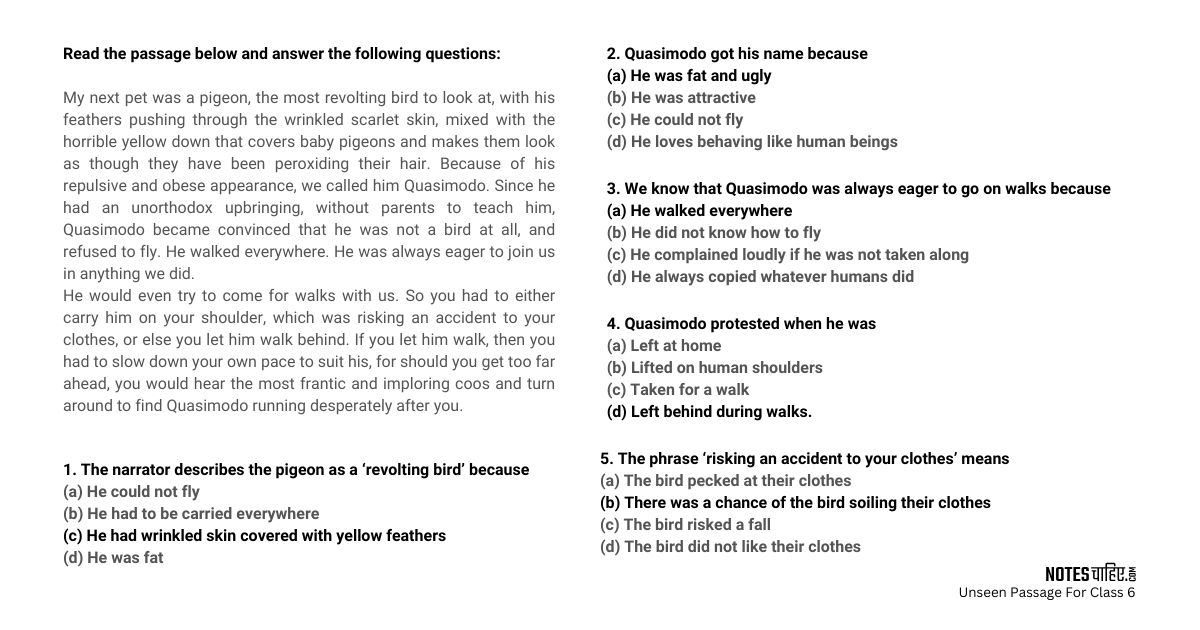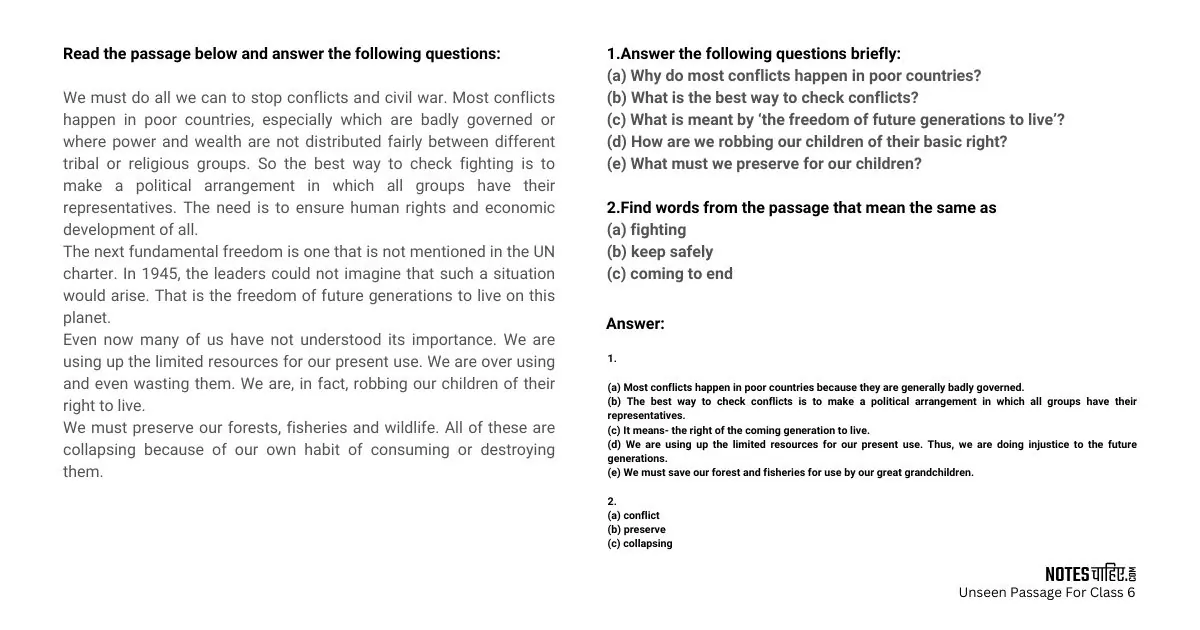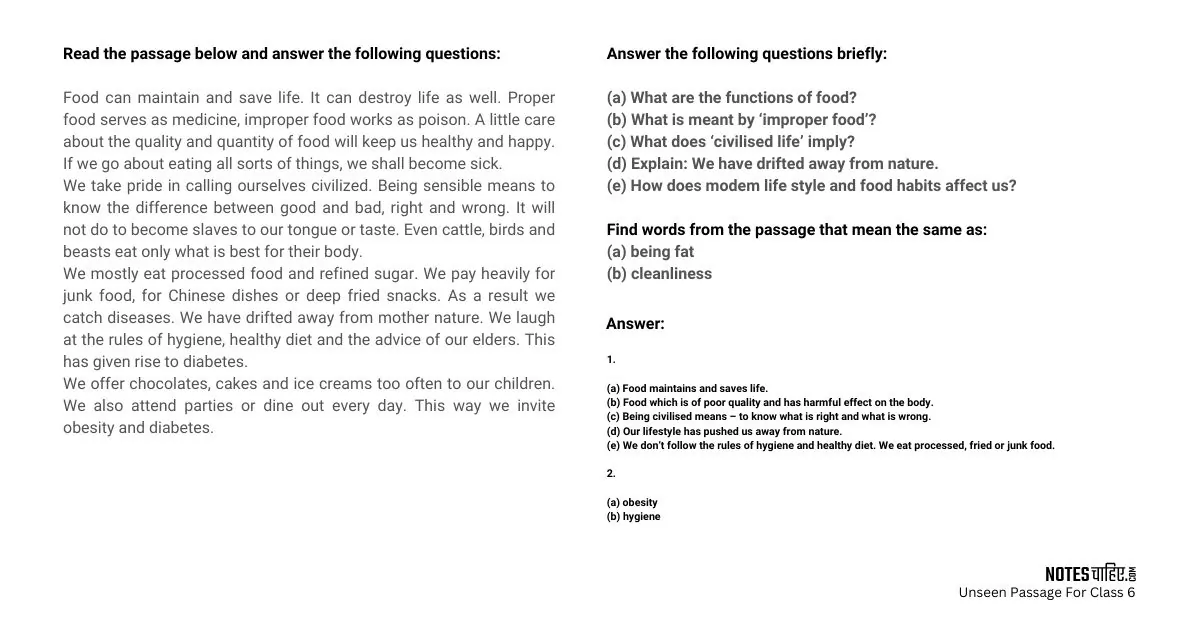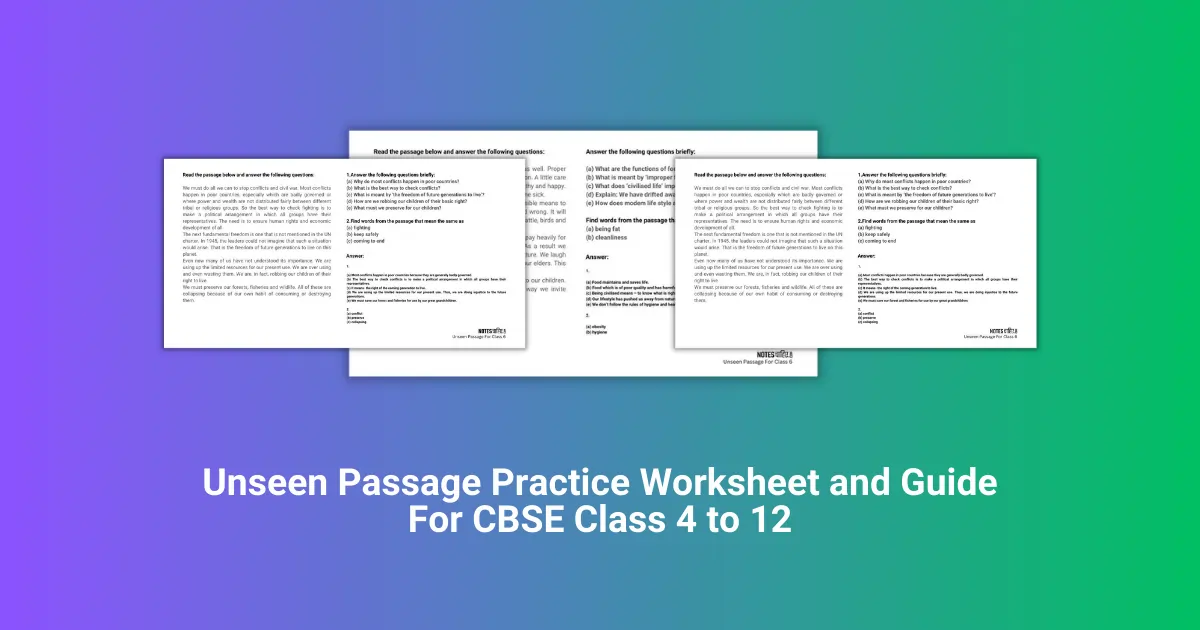An unseen passage is a piece of text that students are given to read and answer questions about without any prior preparation. Unseen passages are often used in English exams to assess students’ reading comprehension skills.
For students in CBSE classes 2 to 12, unseen passages are typically short and simple, and the questions focus on basic comprehension skills such as understanding the main idea, identifying key details, and following the sequence of events.
As students progress through their schooling, the passages become more challenging and the questions require more complex analysis and interpretation.
Benefit Of Unseen Passage
| Aspect | Benefits |
| Reading Comprehension | Quick, accurate understanding |
| Vocabulary Enhancement | Exposure to diverse vocabulary |
| Critical Thinking Skills | Analysis, inference, and logical reasoning |
| Increased Reading Speed | Efficient reading skills |
| Understanding of Language | Enhanced comprehension of styles |
| Exposure to Literary Works | Fosters love for diverse reading |
| Empathy and Cultural Understanding | Promotes global outlook |
| Improvement in Writing | Model for enhancing writing skills |
| Extended Benefits | |
| Crucial for workplace communication | |
| Translates to clear and effective writing | |
| Enhances awareness of current events | |
| Sharpens reasoning skills | |
| – Positively impacts academic performance | |
Types Of Unseen Passage
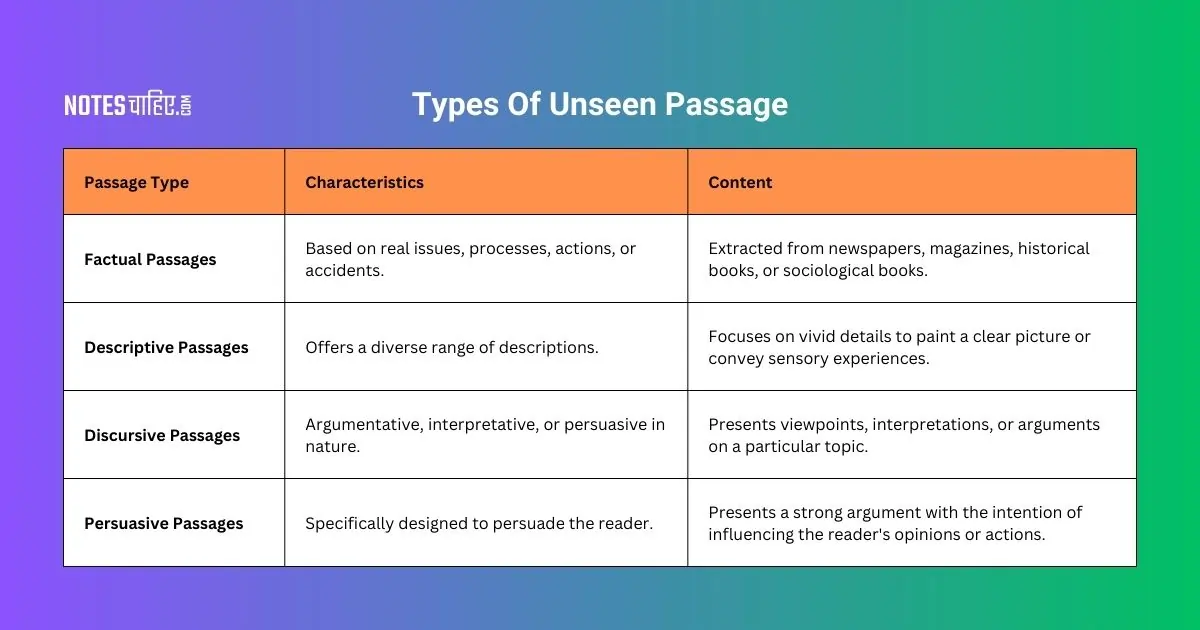
| Passage Type | Characteristics | Content | Purpose |
|---|---|---|---|
| Factual Passages | Based on real issues, processes, actions, or accidents. | Extracted from newspapers, magazines, historical books, or sociological books. | Presents information objectively and factually. |
| Descriptive Passages | Offers a diverse range of descriptions. | Focuses on realistic details to paint a clear picture or convey sensory experiences. | Aims to create a vivid and immersive understanding for the reader. |
| Discursive Passages | Argumentative, interpretative, or persuasive in nature. | Presents viewpoints, interpretations, or arguments on a particular topic. | Encourages critical thinking and analysis; aims to persuade or inform. |
| Persuasive Passages | Specifically designed to persuade the reader. | Presents a strong argument with the intention of influencing the reader’s opinions or actions. | Convinces the reader to adopt a particular perspective or take a specific course of action. |
| Other Types of Passages | Narrative Passages, Argumentative Passages, Analytical Passages, Expository Passages, Informative Passages. | Varying based on the specific type of passage. | Serve different educational and informational purposes. |
How To Attend An Unseen Passage In Exam?
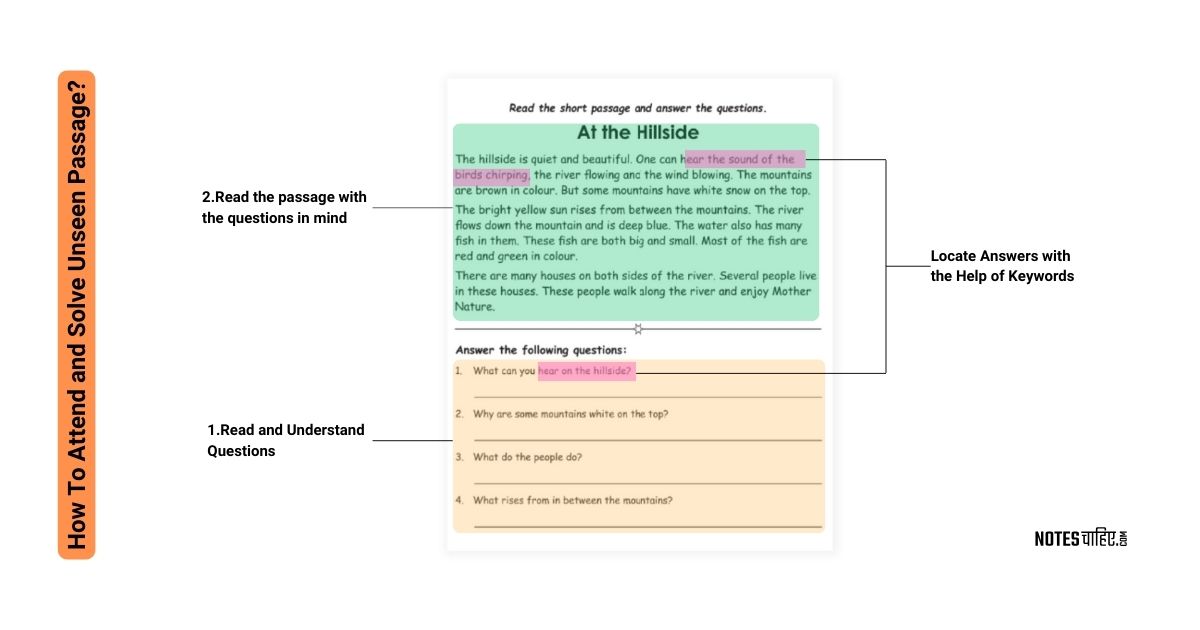
- Read the Questions First:
- Begin by quickly scanning through the questions related to the passage.
- This initial overview helps in identifying the specific information to look for while reading the passage.
- Understand the Questions:
- Ensure a clear understanding of the questions’ requirements and what is being asked.
- Identify the type of information or detail each question is seeking.
- Read the Passage with the Questions in Mind:
- Approach the passage with a focus on the identified questions.
- This targeted reading helps in efficiently locating relevant information needed to answer the questions.
- Locate Answers with the Help of Keywords:
- Pay attention to keywords or key phrases in both the questions and the passage.
- Use these keywords as cues to locate specific information within the text.
- Understand the Passage Instead of Translating:
- Avoid literal translation if the passage is in a language other than your native language.
- Strive to comprehend the meaning and context of the passage without relying solely on translation.
- Focus on Relevant Details:
- Concentrate on the details that directly address the questions.
- Discern between essential information and extraneous details to save time and maintain focus.
- Make Quick Notes:
- Jot down brief notes or underline key points while reading.
- These notes serve as a quick reference when answering questions and can aid in organizing thoughts.
- Check Your Answers Before Writing Them:
- Review your chosen answers against the questions to ensure accuracy.
- Correct any misconceptions or errors before finalizing your responses.
- Answer Should be in the Same Tense, in Which the Question is Given:
- Pay attention to the tense used in the question.
- Formulate your answers using the same tense to maintain consistency and coherence.
www.cbse.nic.in CBSE class 10 Date Sheet 2024
#1 Unseen Passage Worksheet for Class 4
Check the below unseen passage worksheet for class 4. The passage contains 50-100 words and each passage has at least 3 questions. Also, solution.
We have also provided the answer of the passages
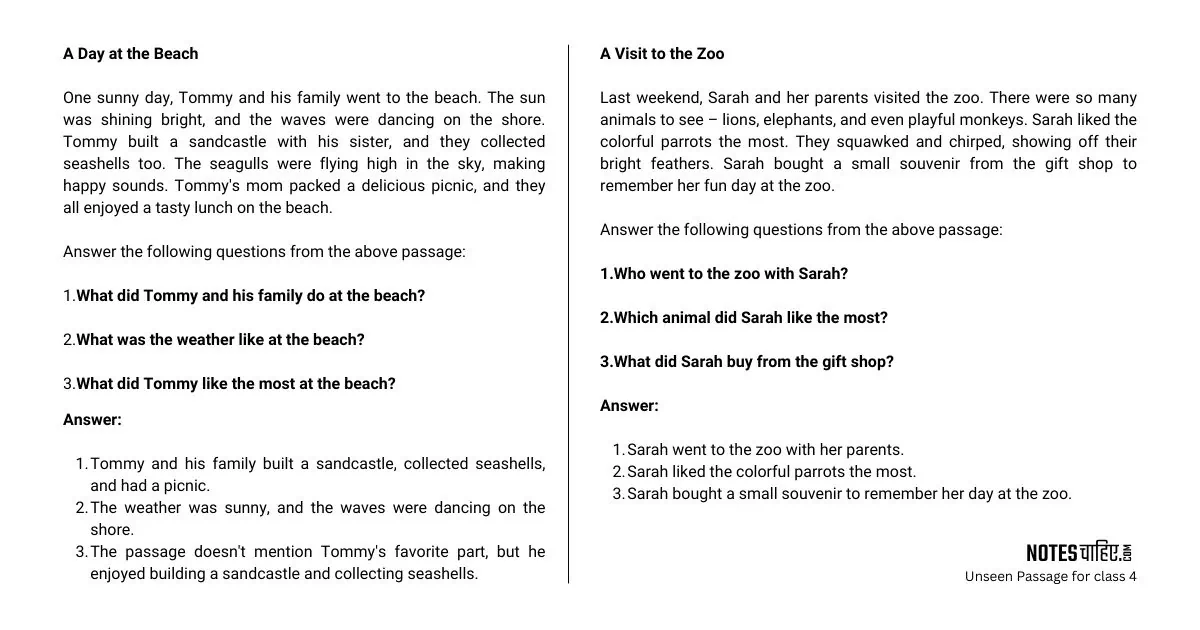
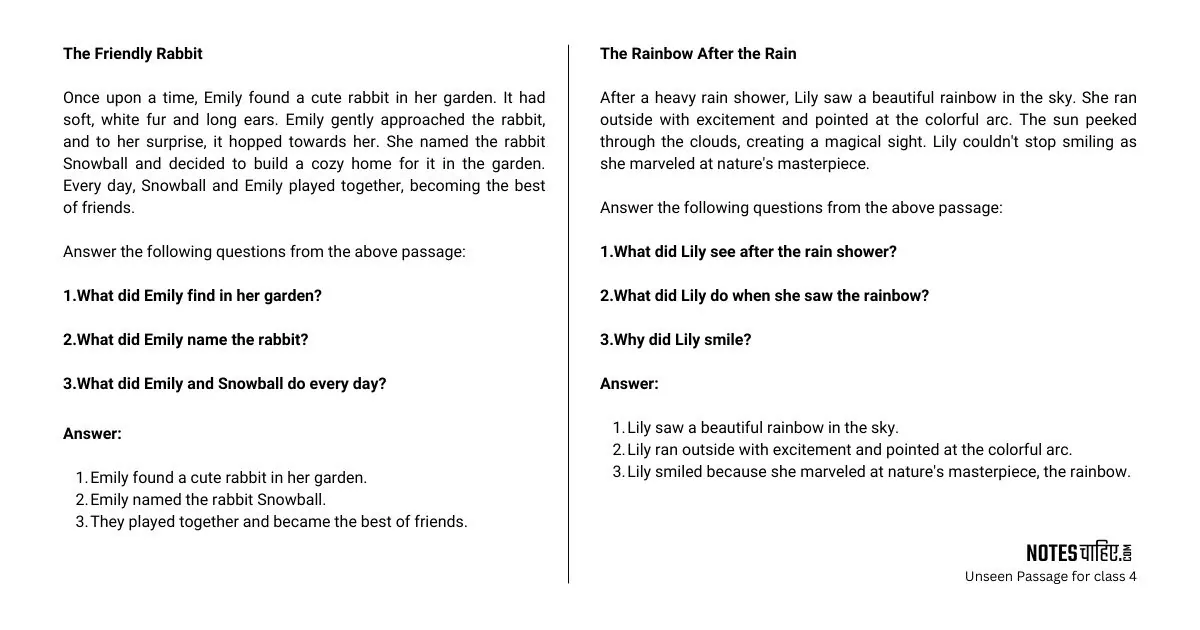
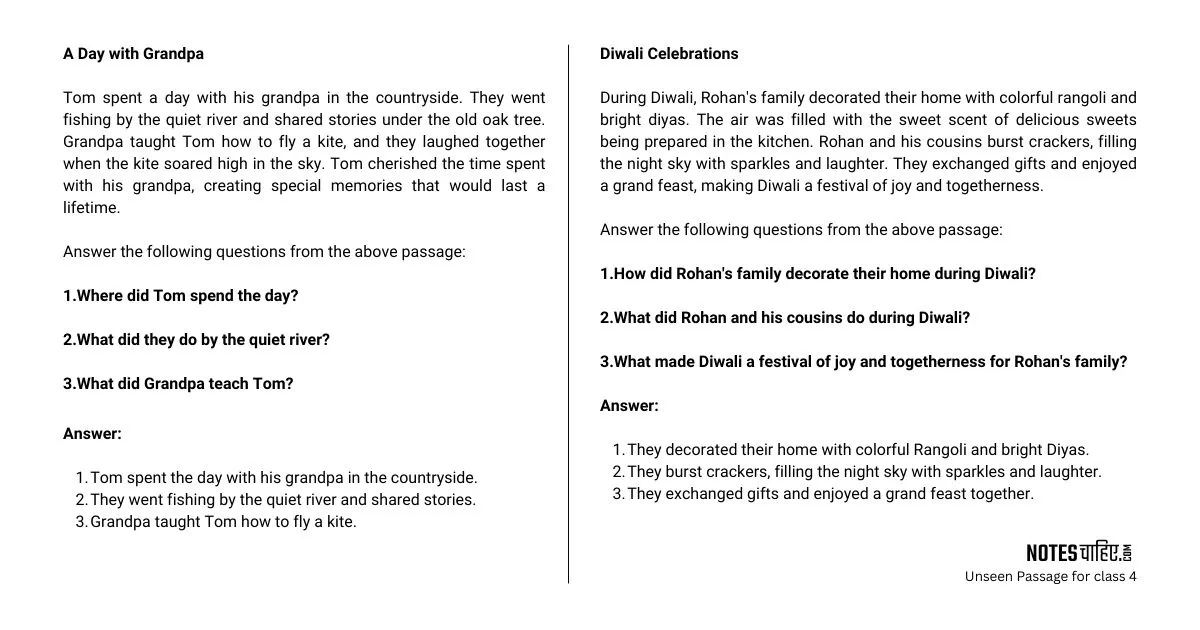
#2 Unseen Passage Worksheet For Class 5
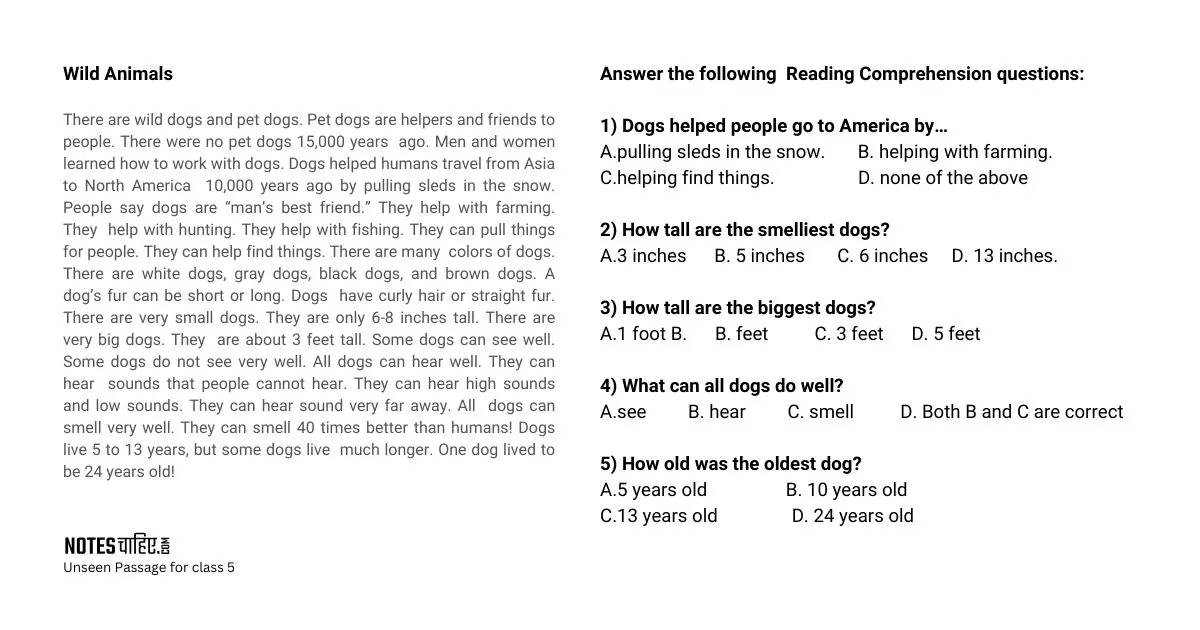
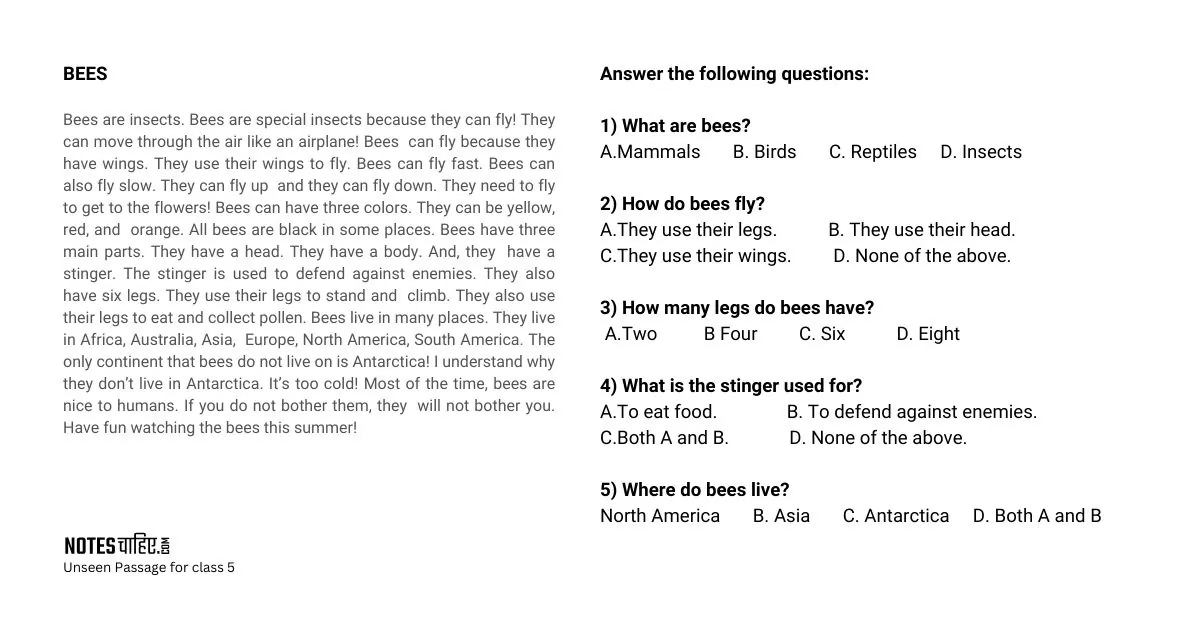
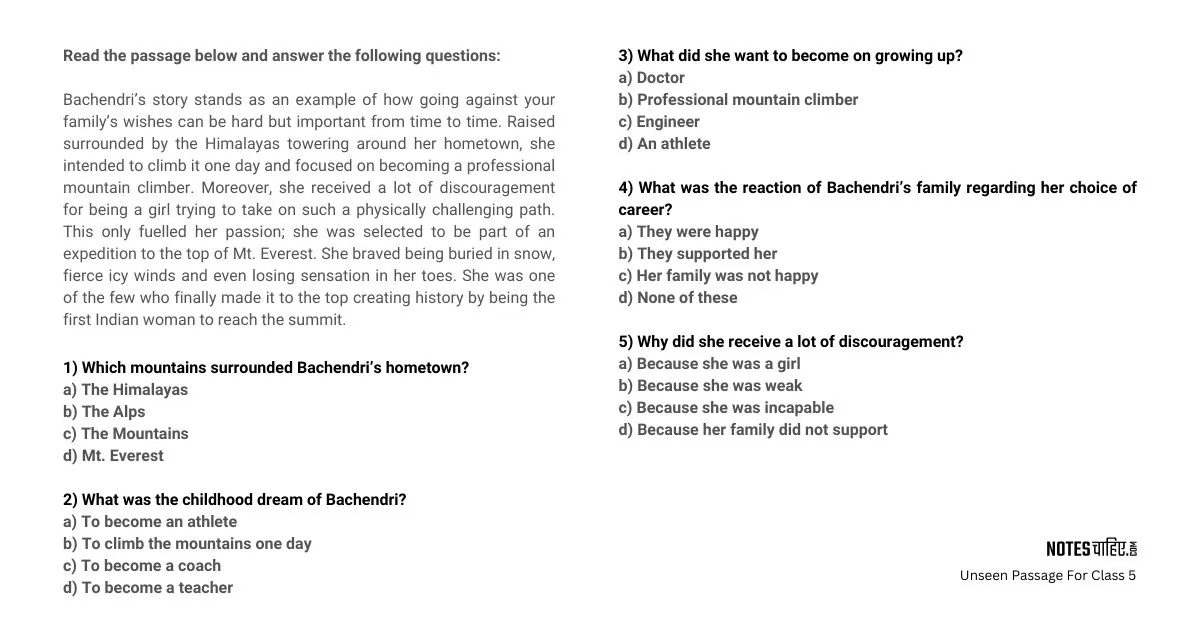
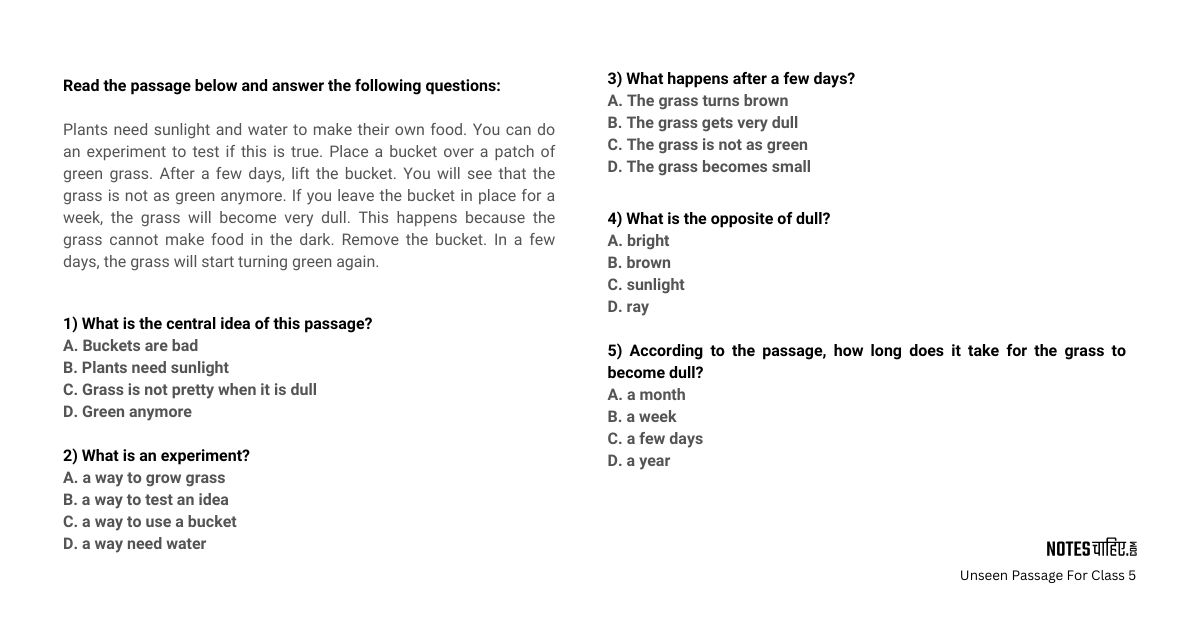
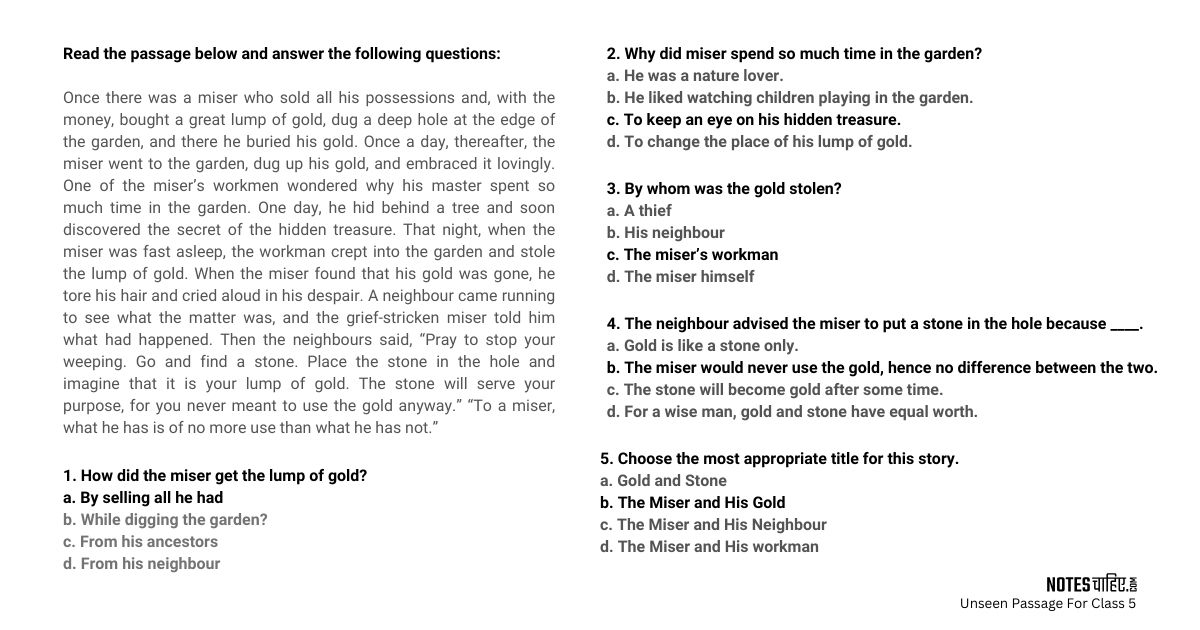
#3 Unseen Passage Worksheet For Class 6
The comprehension reading for class 6 contains a descriptive paragraph with multiple choice questions and Q&A.
